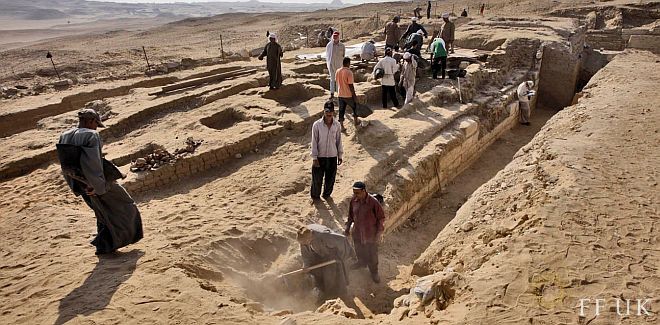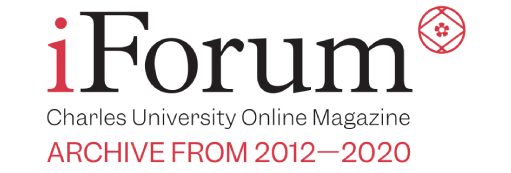Keziah Garratt-Smithson - International iForum • foto: Martin Frouz • 14 January 2014
Find of the Czech Institute of Egyptology listed in Top 10 Archaeological Discoveries of 2013
Good news reached the Czech Institute of Egyptology of Charles University in Prague this January as one of its excavations was ranked number six in a listing of the Top 10 archaeological discoveries of 2013 by Heritage Daily.

Excavations in Abusir
The rankings looked at all the published excavations from across the year and cherry picked the most significant. In first position was the University of Leicester's discovery of the remains of Richard III. In second was a Roman statue of an eagle which was in almost perfect condition and was found by a team from the Museum of London Archaeology. The third discovery was that of a Canaanite palatial wine cellar, which is thought to be the largest discovered in the Near East.
The discovery of Richard III was considered the most significant as his resting place has been unknown for centuries and highly sort after by historians and archaeologists alike. His body was discovered when a team from Leicester University were excavating the remains of an old church beneath a car park. After running tests archaeologists and pathologists determined it was indeed his skeleton. They found DNA evidence, but also his spine was misshapen due to scoliosis which was a feature frequently mentioned in contemporary accounts. The wounds found on the skeleton also fit with how Richard met his end, at Bosworth field in 1485. He had several head injuries, among others, which were made by weapons used during the late 15th century. The debate about where his remains should finally be put to rest is still ongoing, as Leicester is enthusiastic to keep him but as a King many feel he should be buried in Westminster Abbey following tradition. There is also an argument to bury him in York Minster as those were his wishes, being a member of the House of York, though ironically what he wanted is currently being ignored by most people.
Heritagedaily.com is a well known independently run website that has a vast number of subscribers worldwide. It specialises in keeping enthusiasts up to date on the latest discoveries, theories, and papers regarding all things archaeological. The site is contributed to by students, professors, and archaeologists. These specialists are based across the globe from Norway to the United States. The site is updated daily and has a wide range of articles spanning every speciality and time period. Therefore it is a proud moment for the Czech Institute of Egyptology to be recognised by such a prestigious and well-known website.
The discovery itself was made in mid September 2013. Czech archaeologists found the tomb of a high ranking royal physician, Shepseskaf-Ankh (the name translates as "Shepseskaf is living"). The tomb is of great significance as it provides rich information on Shepseskaf-Ankh’s career, as a priest to the sun god Re serving under several rulers of the 5th dynasty.
The tomb itself is surprisingly well preserved considering its age of 4500 years. Apparently the archaeologists found the walls still standing four metres high. The structure measured 21 x 14 metres in total. It contained a corridor chapel, similar to many tombs found, which ended in a stele carved into the shape of false doors.
A stele is a slab of stone usually taller than it is wide. They have been found throughout many ancient cultures such as Greece, Mesopotamia, North Africa, and the Far East. Ancient Egypt and South America are unique in the sheer volume of steles found. The purpose was monumental, most commonly to publish laws, commemorate victories, or as part of funerary structures.
Shepseskaf-Ankh’s tomb was discovered at a site which the Czech Institute of Egyptology has been working on for many years. Surrounding the tomb they have discovered burial sites for other physicians which have led them to believe that it was a cemetery set out specifically for high ranking royal physicians. It has been a momentous achievement for the Institute following other great discoveries in the Abusir area. For instance in 2012 they have discovered the tomb of a princess there.
The find was celebrated by the Egyptian Government as well. The Minister for Antiquities Ibrahim Ali commented: "The importance of this tomb lies in the importance of its owner, who was one of the most distinguished physicians of the Pyramid Builders Era and who was closely associated with the kings."
|
Keziah Garratt-Smithson is a second year student currently on an ERASMUS placement at Charles University in Prague. At home Keziah attends Aberystwyth University, where she studies medieval and early modern history. In her spare time she is a keen reader, loves films, and enjoys horse riding. She chose to write for the iForum because it was a great way to meet like minded individuals, whilst having fun and gaining useful work experience. |
